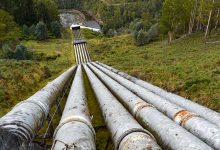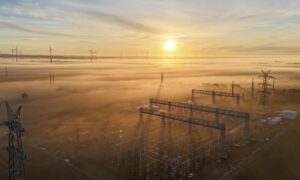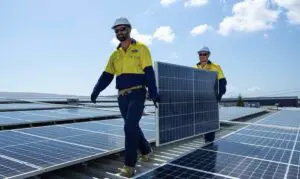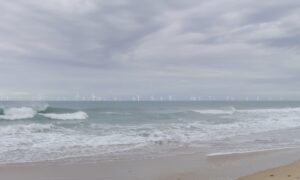Tasmania could draw its vast hydroelectric resources to emerge as a leader in the production of renewable hydrogen, with the state’s major electricity utility predicting it could deliver by far the cheapest supply of zero-emissions gas.
The state government-owned utility, Hydro Tasmania, has detailed the strong potential for Tasmania to become a leading producer of renewable hydrogen in a new white paper, which also predicts that renewable hydrogen could provide a major stimulus to Tasmania’s struggling economy.
Hydro Tasmania considers the already high renewable energy penetration, which is near 100% due to the state’s abundance of hydroelectricity resources, supplemented by increasing amounts of wind energy, provides Tasmania with a natural competitive advantage when it comes to the production of renewable hydrogen.
“Our analysis indicates that green hydrogen can be produced in Tasmania for approximately 10 to 15 per cent less than other Australian power grids needing to offset emissions and 20 to 30 per cent less than from dedicated off-grid renewables, due to the high plant utilisation that can be supported by Tasmania’s hydropower,” Hydro Tasmania CEO Steve Davy said.
“Other advantages include reliability of supply due to the state’s high level of energy security and stability, self-sufficiency in renewable energy by 2022, strong transport infrastructure options and more options for supply through development of further interconnection and the Battery of the Nation initiative.”
In its whitepaper, Hydro Tasmania says that it believes it would be able to produce renewable hydrogen at a lower cost than proposals to produce hydrogen using solar and wind alone, as its ability to ‘firm’ production with a supply of dispatchable hydroelectricity generation would guarantee greater utilisation of equipment like electrolysers.
Having already established an electricity supply that is overwhelmingly supplied by renewables, Hydro Tasmania believes the State could undercut producers that use grid-sourced electricity to produce hydrogen and subsequently offset the emissions, as well as producers that propose to build dedicated solar and wind projects to power electrolysers.
“As Australia’s largest generator of clean renewable energy, Hydro Tasmania stands ready to support the development of a green hydrogen industry in the state,” Davy added.
“This includes taking a lead role in establishing a program to explore the integration of green hydrogen production with renewable energy systems, such as the ability to use excess solar and wind generation to produce hydrogen by electrolysis.”
The production of renewable hydrogen has received growing attention due to the prospects of a new export opportunity for Australia, particularly in light of Australia’s high natural abundance of renewable energy resources like solar and wind.
Japan and South Korea have both invested heavily in the development of hydrogen technologies, with renewable hydrogen having the potential to provide a zero-emissions source of energy storage and transport fuel.
Earlier in the month, German steel manufacturing giant Thyssenkrupp completed a successful trial of using hydrogen to displace coal in the production of steel, providing a potential pathway for hydrogen to help decarbonise an industrial sector historically reliant on coal.
Japan has set a target of achieving a renewable hydrogen supply at a price below $5 per kilogram. Hydro Tasmania estimates that this would require a price point in Australia of $3.10 per kilogram, to account for the cost of processing and exporting the fuel.
“As countries like Japan and South Korea look to green hydrogen as a way to meet emissions reduction targets, hydrogen production has the potential to further support large-scale investment in new renewables, as well as direct employment,” Davy added.
“It also opens the door to the creation of industries around related technology and the development of local expertise, bringing substantial benefits for the Tasmanian economy.”
Hydro Tasmania pointed to an analysis commissioned by the Australian Renewable Energy Agency and completed by ACIL Allen, which suggests hydrogen could grow to become a multi-billion dollar export opportunity for Australia by 2030.
Hydro Tasmania has been a strong supporter of proposals to strengthen Tasmania’s connection with the rest of the National Electricity Market through the construction of an additional undersea interconnector between Tasmania and Victoria.
In an earlier white paper published by the Tasmanian utility, Hydro Tasmania detailed analysis that predicted an additional interconnector with the mainland would support additional investment in renewable energy projects and allow Tasmanian hydroelectricity stations to provide pumped-hydro energy storage to the wider energy market.
The ‘Battery of the Nation’ project would see Tasmanian hydroelectricity generators provide much-needed energy storage to the National Electricity Market, helping to maintain a reliable supply of electricity as an ageing fleet of coal-fired generators exit the market, and are replaced by lower cost renewable energy projects.










